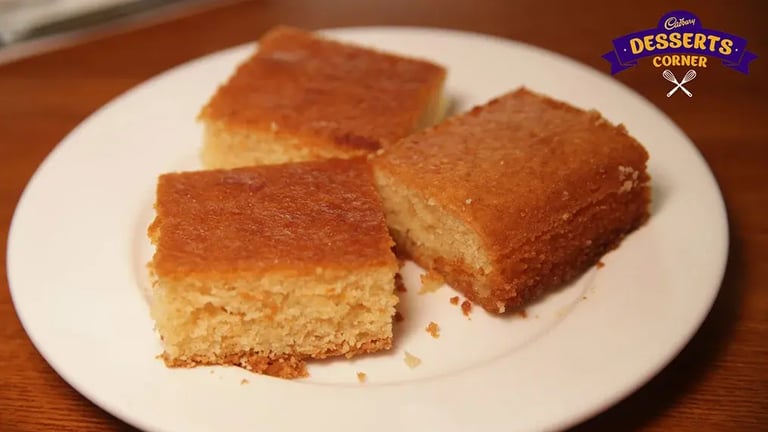- Home
- Articles
- 7 Greek Desserts So Rich and Juicy That They Will Make You Want to Read up on Greek History
Greek desserts might come as a surprise, as you might be imagining more of Western or European influences, but no, Middle Eastern influences are strong in the land of the Greeks. Most of their desserts are made from filo dough which is baled and then soaked in rich, rose-infused sugar syrups just like in the Middle East.

Greek desserts might come as a surprise, as you might be imagining more of Western or European influences, but no, Middle Eastern influences are strong in the land of the Greeks. Most of their desserts are made from filo dough which is baled and then soaked in rich, rose-infused sugar syrups just like in the Middle East.
It might come across as a surprise to you, but the Greeks forgot the cheesecake and left it in their medieval glorious past and it does not exactly feature in their modern list of desserts at all. For Greeks have a lot of Turkish and Middle-Eastern influences with filo dough and sugar syrups being a staple among their desserts.
But as you hop on the islands of Greece, you will come across regional specialties like the island of Crete has portokalopita, which is infused with orange blossom and then the city of Thessaloniki has the pistachio-dusted beloved revani. Most of their desserts have a rich historic past, shaped by the rise and fall of the Ottoman Empire.
1. Baklava
Turns ou,t the Middle East is not the only place Baklava is restricted to! The Greeks have also been enjoying the Baklava alongside the Turks and Arabs. It became especially popular in Greece during the Ottoman Empire period from the 15th to the 19th centuries. Turks introduced many of their culinary traditions to Greeks at that time. In Greece today, baklava is a staple dessert seen at holidays, celebrations, and coffee shops. There are regional variations using different nuts like walnuts, pistachios, or almonds and some Greek bakers even add cinnamon or cloves to the syrup. The layered filo dough is very similar to another classic Greek sweet called galaktoboureko. Both likely evolved from ancient filo recipes developed under Ottoman rule.
2. Galaktoboureko

Galaktoboureko is a traditional Greek dessert made of filo pastry, semolina, and custard. Thin layers of filo dough are layered with a rich custard that is made from milk, sugar, and egg yolks. The layers are then folded or rolled up and baked until the pastry is crisp and golden. After baking, the warm galaktoboureko is generously drizzled with syrup made from sugar and water. This causes the pastry to absorb the sweet syrup, becoming soft and moist inside while retaining a crisp exterior.
3. Glyko tou koutaliou
Glyko tou koutaliou translates to "spoon sweet" in English. This dessert is a preserved fruit compote traditionally made with figs, but other fruits such as quince (similar to pears), apricots, or cherries can also be used. Small pieces of fresh fruit are slowly cooked with water and sugar until a thick syrup forms. The fruit becomes soft and infused with floral notes from the long, low cooking process. Glyko tou koutaliou is commonly served as a condiment with Greek yogurt or cheese and its jam-like texture and fruity taste also make it a popular ingredient in pastries and cakes.
4. Loukoumades

Loukoumades are the Greek version of donuts minus the hole in the center, or one could say they are the scooped-out holes of the donuts. These iconic Greek honeyballs boast an origin story stretching over 2,000 years. According to ancient poet Callimachus, loukoumades—then called "honey tokens"—were the original reward for champions at the first Olympics in 776 BC. While modern Olympics swapped honey balls for medals, Greeks still flock to bakeries for this sweet relic of their rich history. In each bite of syrupy goodness, one tastes not only honey but a story spanning millennia to the very roots of competition itself.
5. Karydopita
Karydopita is a traditional Greek walnut cake that originated on the island of Crete. As the name suggests, it is made primarily from walnuts and covered in a sweet syrup. The cake itself consists of ground walnuts mixed into a batter along with flour, sugar, eggs, butter, orange zest, cloves, and sometimes brandy or rum. The walnuts give it a dense, moist texture. It is baked in a bundt pan or tube pan to allow the syrup to fully soak in. Each bite delivers the perfect balance of flavors of the tender walnut cake and sweet, spiced liquid. It's a traditional Greek dessert that's especially delicious and served with a cup of Greek coffee.
6. Revani

Revani is a traditional syrup-soaked cake enjoyed across Greece, Turkey and other Mediterranean countries. The cake is made from semolina, sugar, flour, and flavorings like vanilla, lemon zest, or rose water, all depending on the recipe. What distinguishes Revani is its intense sweetness achieved through soaking the baked cake in sugar syrup. This process results in a perfectly moist and tender texture. The Greek version of the Revani often includes coconut in the batter. Revani is traditionally served at celebrations, and decorated with pistachios, almonds, coconut, or fresh fruit. Similar soaked cakes also exist in Middle Eastern, Balkan, and North African cuisines under different names.
7. Portokalopita
This iconic Greek cake traces its origins to the island of Crete, where oranges were bountiful, as early as Minoan times over 4,000 years ago. The name "portokalopita" provides insight into its ingredients and origins. Breaking down the Greek words, "portokali" refers to oranges while "Pita" means pie or pastry. Therefore, it can be translated as "orange pie". When the recipe first emerged is unknown, but it likely developed as a way to use up leftover sheets of filo pastry. Today, Portokalopita remains deeply intertwined with Greek culture. Its ingredients celebrate the fruits closely tied to Crete's history.
More Like This
Popular Articles





Trending Web Stories
Curated Recipes
















